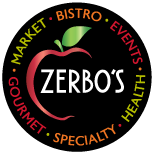What’s almost a vitamin, found in flower buds, and can help you stay healthy year-round?* Quercetin!
First identified in 1930 by the Nobel Prize-winning discoverer of vitamin C, Albert Szent-Györgyi, quercetin is often referred to as a vitamin-like molecule. Researchers initially thought it was a vitamin, an essential nutrient required for the body to function normally and without which deficiency symptoms will occur.
Quercetin was labeled as vitamin P (for paprika) but later reclassified as a bioflavonoid, a plant-based molecule that has biological activity in the human body.
Just because there isn’t a recommended daily intake for quercetin doesn’t mean we’re better off not having some every day. Here’s what you need to know.
The Bioflavonoid Big Picture
Flavonoids are a huge class of at least 4,000 plant-based compounds. In plants, these molecules play a myriad of roles. Their name is derived from the Latin word flavus, meaning yellow. Flavonoids act as pigments, providing a range of beautiful colors – not just yellow – as well as protection from UV damage.*
Flavonoids inject tantalizing aroma and flavor into flowers and fruit that attract pollinators and people alike. They also help defend the plant against stress from weather and invading pathogens, such as unwanted insects.
Flavonoid colors and scents are fine for plants, and make our world a nicer place, but what about their health benefits? Probably not coincidentally, some flavonoids do good things for us, too. Not all flavonoids are deemed helpful to humans, but those that are helpful receive the designation “bioflavonoid.”
Catechins found in tea and cocoa, and anthocyanidins that lend the bluish tones to grapes and blueberries are examples of bioflavonoids that might be in your kitchen right now. These phytonutrients act as antioxidants, support blood vessel health, provide immune support, and more.*
Secret of the Mediterranean Diet
In the bioflavonoid kingdom, quercetin reigns supreme. You will find it in foods ranging from onions to elderberries and even in red wine.
The richest food source of quercetin is capers, the pickled flower buds (that’s right) of the caperberry bush. These grow throughout the Mediterranean and are used more widely in cuisine there. In North America, you might find capers as a garnish on upscale seafood dishes or possibly in a small, forgotten jar at the back of your fridge.
The abundance of quercetin-rich foods in the Mediterranean diet is likely one of the key reasons it is so famously heart healthy.* Which brings us to the first reason we should pay attention to our quercetin intake.
Quercetin supports healthy blood vessels*
The healthy structure and function of our blood vessels is ultimately governed by their specialized lining, called the endothelium. This thin membrane lines the insides of the arteries, veins, and the heart itself. The endothelium releases substances that control vascular contraction and relaxation, blood clotting, and even immune function.
Quercetin has been shown to have a positive effect on maintaining a healthy endothelium.* Quercetin’s boon to blood vessels appears to extend right down to the tiniest capillaries, which supply nutrients and oxygen to every cell in the body.
Quercetin fights free radicals*
A second major reason to ensure optimal quercetin consumption – closely tied to the first – is its starring role in protecting against oxidative damage.* Like other famous flavonoids, quercetin is an excellent antioxidant.*
In addition to its own free-radical quenching action, quercetin has an ingenious ability to enhance the activity of other antioxidant nutrients. For example, it aids in vitamin C absorption and assists in recycling vitamin C, extending vitamin C’s ability to donate electrons and extinguish oxidation.
Given vitamin C’s role in supporting healthy collagen formation as well as bones, cartilage, teeth, and gums, it is worth helping it go as far as it can. Considering this synergy, it is probably not a coincidence that many foods rich in vitamin C also contain quercetin.
Quercetin is an immune ally*
Consider quercetin as part of your immune health arsenal.* It holds its own alongside the nutrients better known to support our immune health, such as vitamin C, vitamin D, and zinc.
Quercetin helps support healthy sinus, and respiratory and immune system functions.* Keep it in mind for times when we are more likely to catch whatever is going around, such as during travel, back to school, or winter.
Quercetin Absorption and Safety
Natural Factors Quercetin is sourced from the flower buds of Sophora japonica, the Japanese pagoda tree. In Asia the dried flower buds of Sophora japonica have a long history of traditional use for vascular health.
This sustainable source delivers the highest-quality quercetin using an environmentally friendly extraction method that protects the delicate phytonutrient. Quercetin has been found to be safe in many toxicity studies and has self-affirmed Generally Recognized as Safe (GRAS) status.
In its raw state, extracted quercetin is minimally absorbable. Quercetin bioavailability can be enhanced by combining it with other natural ingredients that encourage absorption.
Quercetin LipoMicel Matrix is a unique combination that disperses quercetin into tiny micro-droplets upon ingestion. This superior delivery system is designed for enhanced absorption, leading to higher blood concentrations of quercetin – up to 10 times higher – a full 12 hours after ingestion.
Studies also show that Quercetin LipoMicel Matrix stayed in trial participants’ systems longer, thanks to its sustained-release design. This means that just 250 mg is as effective as 2500 mg of regular quercetin.



コメント